Some aspects of 3D quality
First of all, let me attract your attention to
the games which are traditionally problem for ATI. For example,
you all know that it is almost impossible to enable fog in the Need
For Speed:Porsche 2000 with the RADEON (or RAGE128/Pro), or it will
be possible only after trying a lot of versions of the drivers and
making changes in the Registry. Now this problem is done away with
in the RADEON 8500:
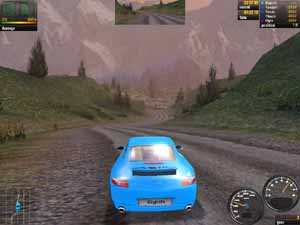

But there is another bug: the text in the menu
is now hardly readable, and some dropdown menus lack any text at
all.
Now let's analyze the anisotropy in the Direct3D.
Well, I should say that this API ensured no forcing of anisotropy
for the RADEON. But the filtering is present and gets enabled if
an application allows it. It is, for example, Max Payne, a game
which is widely popular (it is based on the same engine as the 3DMark2001).
I have already discussed it in the Palit
Daytona GeForce3 review using NVIDIA's hidden possibilities
for forcing anisotropy in the Direct3D of the GeForce2/3 cards.
Let's look at the scene with the trilinear filtering activated (without
anisotropy):
RADEON 8500 GeForce3
GeForce3
Trilinear filtering
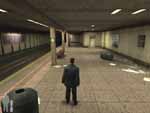
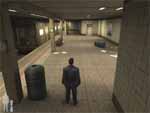
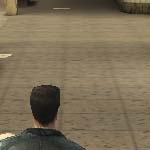

Anisotropic filtering

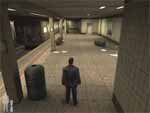
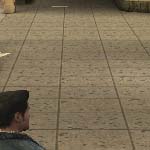
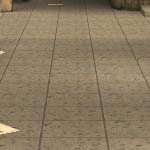
The screenshot for the GeForce3 was obtained at
the maximum level of anisotropy - Level8 (remember that the performance
drops significantly at that), while the anisotropy level of the
RADEON 8500 is unknown since the game doesn't allow setting it (I
think the Highest level is used here). You see, the quality of both
cards is excellent. It means that the RADEON 8500 becomes a winner
even without measuring the performance taking into consideration
the speed drop of the GeForce3 with the Level8 activated.
For dessert we have some screenshots from demo-programs
which will be supplied with RADEON 8500 cards after the DirectX
8.1 is released.
There is one more example of what can be done when
pixel shaders of the v1.4 are used:
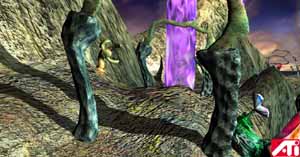
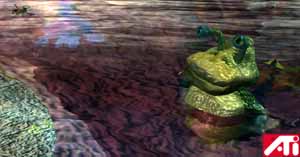
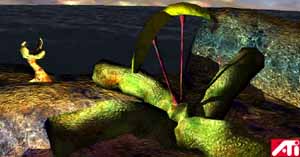
You might remember water from the X-Isle (a demo-program
which demonstrates the might of the GeForce3 in the relief texturing
and forming of water) and a lake from the 3DMark2001, Game4. And
this is what ATI offers (with the shaders used):
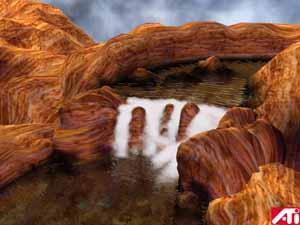
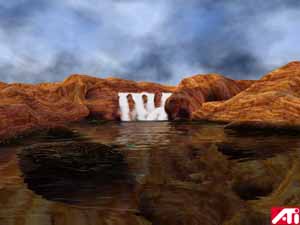
This is the most realistic water I've ever seen
(the foam, though, doesn't fit in here and spoil the image).
Conclusion
- There is already one accelerator from NVIDIA on the High-End
market which will be more improved in the near future (I mean
the GeForce3 Ti 500) while the new product from ATI is only catching
up with it. On the other hand, the necessary prerequisites are
at last created for a normal competition in performance, features
and price;
- Considering that the NVIDIA Ti 500 is not a new product but
just an advanced old one the company is going to release its new
accelerator (NV25) within the next several months, and the RADEON
8500 may darken in the fields it is shining now;
- The price of the RADEON 8500 looks very attractively, especially
because it carries not only a powerful 3D accelerator but also
a possibility of working with 2 outputs. But we do not know how
fast and low NVIDIA can reduce the prices and how the RADEON 8500
will suffer from it;
- The RADEON 8500 has an undoubtedly best performance in the
DirectX, and is slightly edged out in the OpenGL (I hope the bugs
in the Giants will soon be fixed);
- The RADEON 8500 has traditionally high 2D quality (the GeForce3,
though, also shines in it, but sometimes you may come across cards
with a soapy image in 1280X1024), that is why owners of large
monitors will be satisfied. Besides, it can display an excellent
image on the second monitor. The TV-out quality is also magnificent.
- The playback of DVD movies and overlays has no drawbacks either.
It will be very important for owners of discs with MPEG4 films.
So, we have examined the latest product from ATI
from the High-End sector and tested the production card on it. If
we average all performance results the RADEON 8500 will be equal
to the NVIDIA's GeForce3 Ti 500. And if its price will be lower
than that of the latter the RADEON 8500 will undoubtedly achieve
much success. There are not many drawbacks in the drivers this time
and it seems to me that the software for the RADEON 8500 was developed
by another group of programmers than for the RADEON (just reread
the first review of the RADEON and you will see how strong the 3D
quality in games was blamed).
Now we are waiting for the ATI's new product and
news from its partners. Read our 3Digest
where the ATI RADEON 8500 card will also take part.
Write a comment below. No registration needed!















